This year’s reopening of the Levenmouth line follows the opening of a new station and electrification of a suburban route from Glasgow. Richard Clinnick reports.
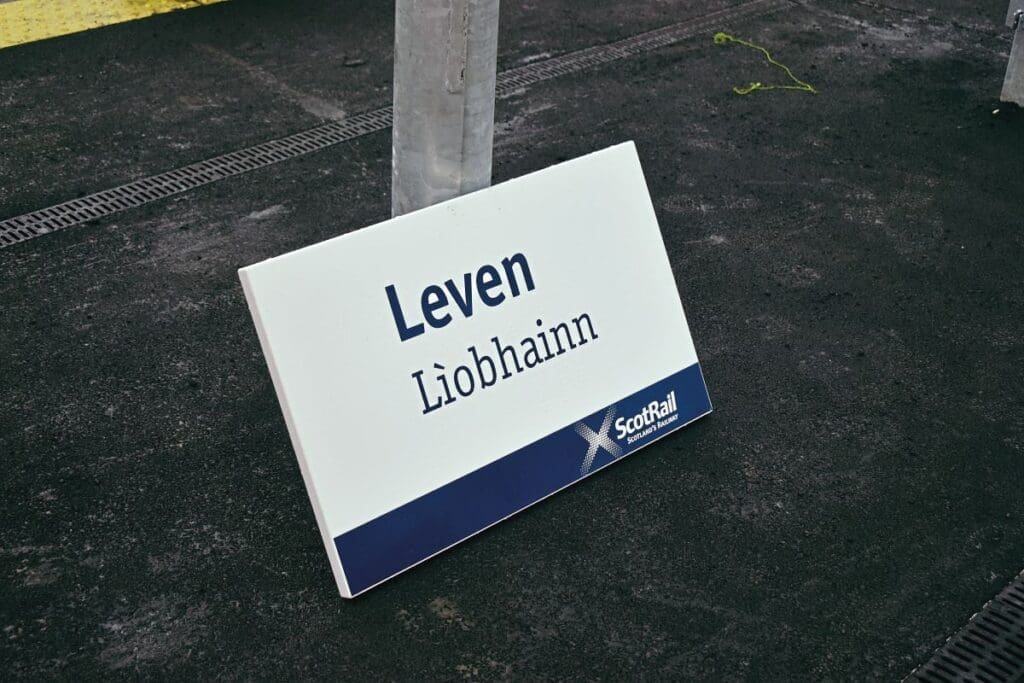
Scotland seems to be the land of opportunity when it comes to rail. While cuts abound in England, electric trains have begun operating on the Barrhead route from Glasgow Central (see Headline News), a new station has opened at East Linton on the East Coast Main Line (see Headline News) and, later this year, passenger trains will return to the Levenmouth route some 55 years after the last passenger services.
Driver training is underway on the five-mile line to Leven, ahead of the planned reintroduction of passenger trains from June.
The line runs from Leven to the Fife Circle at Thornton Junction, with a station at Cameron Bridge. South East Scotland Transport Partnership and Fife Council promoted the project which received formal approval by the Scottish government in August 2019.
Trains first arrived in Leven on July 3, 1854. Just like the soon-to-reopen service, they served the seaside town of Leven plus Cameron Bridge. A new station site opened in Leven in 1885; 24 years later in 1909 the line was doubled. Freight was a major user of rail in the area until 1966 when that ceased running east of Leven. Passenger trains ended in 1969 and three years later the railway to Kirkland Yard, Leven was singled.

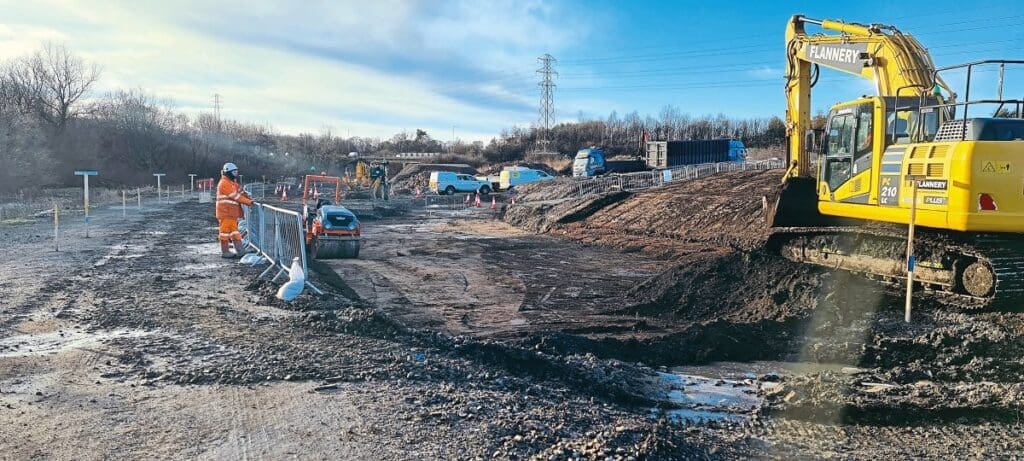
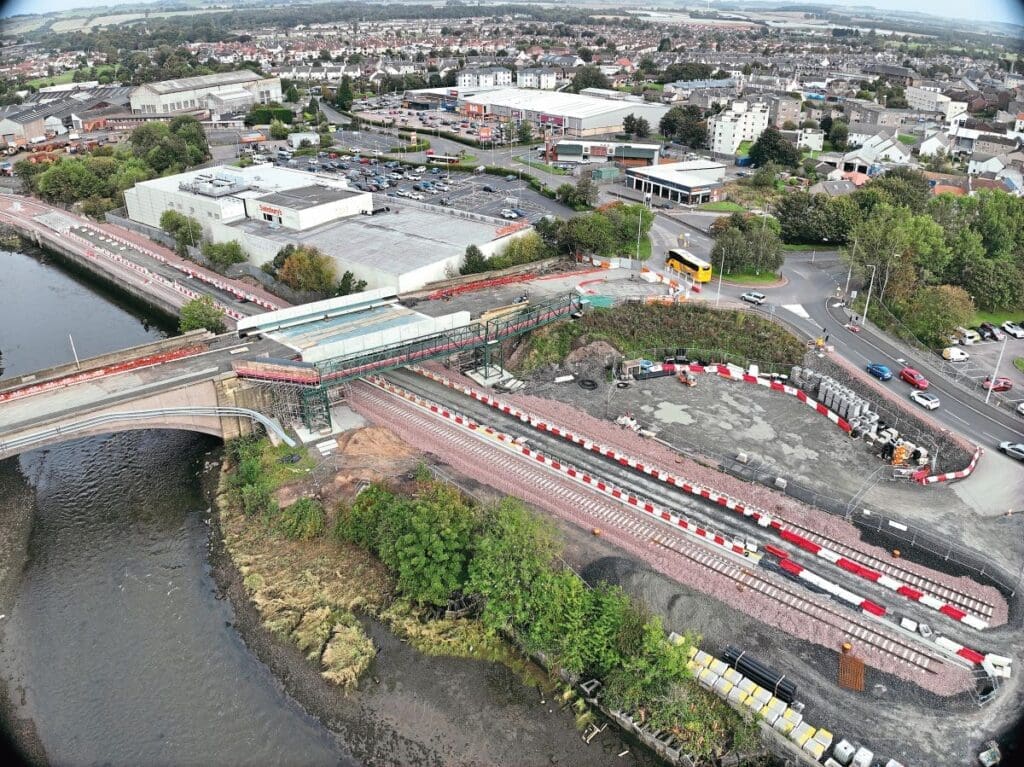
There in spirit
The railway was kept open as a freight-only route to serve the distillery at Cameron Bridge and Methil power station however, regular freight ceased in 2001 when the power station was mothballed.
The railway remained unused but in situ until 2011 when a mile of the route reopened to act as a railhead for the loading point of the opencast coal mine at Earlseat with trains running between 2012 and 2015.
Visiting Leven today it’s easy to see why the railway needs to reopen. You must arrive by car. Even during mid-December these roads are busy, but there seem to be few buses. Public transport is an important driver of economic prosperity. Leven, like so many seaside towns in Britain, has suffered from the decline of its main industries. While neighbouring towns have seemingly prospered, that has not been the case for Leven. The largest employer remains multinational beverage company Diageo, which not only owns the facility at Cameron Bridge but also owns sites in Leven.
House prices are lower in Leven than many other places and the hope is that by trains returning to the Fife town there will be economic input as people begin to commute, although this will likely take a decade to bear fruit.
Until trains return later this year, Levenmouth remains the largest urban area in Scotland without a direct rail link. The area has a population of 33,000 but with the local catchment area that could increase to 43,000. Furthermore, Network Rail and local authorities believe that as well as people leaving the area by train for work and leisure, services will also make the area appealing for walkers and cyclists keen to use the railway as part of their activity.
Campaigns to reopen the railway to passengers have been ongoing ever since passenger services ceased in 1969. In the late 2000s, the estimate for reopening the line was £28 million, although this nearly doubled by the end of the decade.
Studies found that extending Edinburgh Waverley-Kirkcaldy trains to provide an hourly service to Leven were feasible. Another option was to extend Edinburgh Waverley-Cowdenbeath services which would create a half-hourly service.
There was also a hope that freight could return to the line, and while it did between 2012 and 2015, there are currently no planned freight services on the reopened route. That is not to say that they may not ever return. Diageo, likely working with WH Malcolm, is keen to investigate the use of rail freight while Network Rail would be interested in replicating the Highland Spring terminal at Blackford, Perthshire, although that is more of a nationwide idea but could be used for Diageo potentially.
The number of lorries on the road during RE’s visit certainly suggests there is an opportunity, while there is also the Thornton Yard site that could be used as a railhead if anything was to occur, indeed this was used as a storage site for sleepers during the line’s reconstruction.


Reopening go-ahead
Plans to reopen the Levenmouth railway were approved by the Scottish government on August 8, 2019. The plans included 11 miles of single-track new/reinstated railway, two new fully-accessible stations and the provision for eventual electrification.
While the Scottish government wants to decarbonise the railway, it remains the case that finances will dictate what is possible. RE understands that the plans to electrify the line from Haymarket West Junction to Dalmeny will be reintroduced and this will help with ScotRail’s plans for a new fleet of hybrid trains, likely a mixture of battery-electric units (RE321).
The then-cabinet secretary for Transport, Infrastructure and Connectivity Michael Matheson confirmed the reopening when meeting council leaders and local community groups. He said at the time that a proposed rail link with stops in Leven and Cameron Bridge, combined with improved bus services as well as cycling and walking facilities, emerged as the best performing options in the Levenmouth Sustainable Transport Study. At the time he said the cost was around £70m. He added at the time: “I am extremely pleased that the case has been made for the Levenmouth rail link and I look forward to seeing this project being taken forward to the next stages of design.
“The detailed appraisal work that has been carried out suggests that improved transport links, which give Leven a direct rail link to the capital, will lead to an enhanced local economy, bringing better access to employment and education and the potential for new investment. Easier and more sustainable travel options will make it easier for people to reach hospitals, schools and visit other areas of the country as well as giving better access to Levenmouth.
“I would like to acknowledge the hard work of local MSPs, elected members and interest groups who have campaigned for the reopening of this line, and I look forward to working with all partners to realise all of the benefits that improved connectivity can bring.”
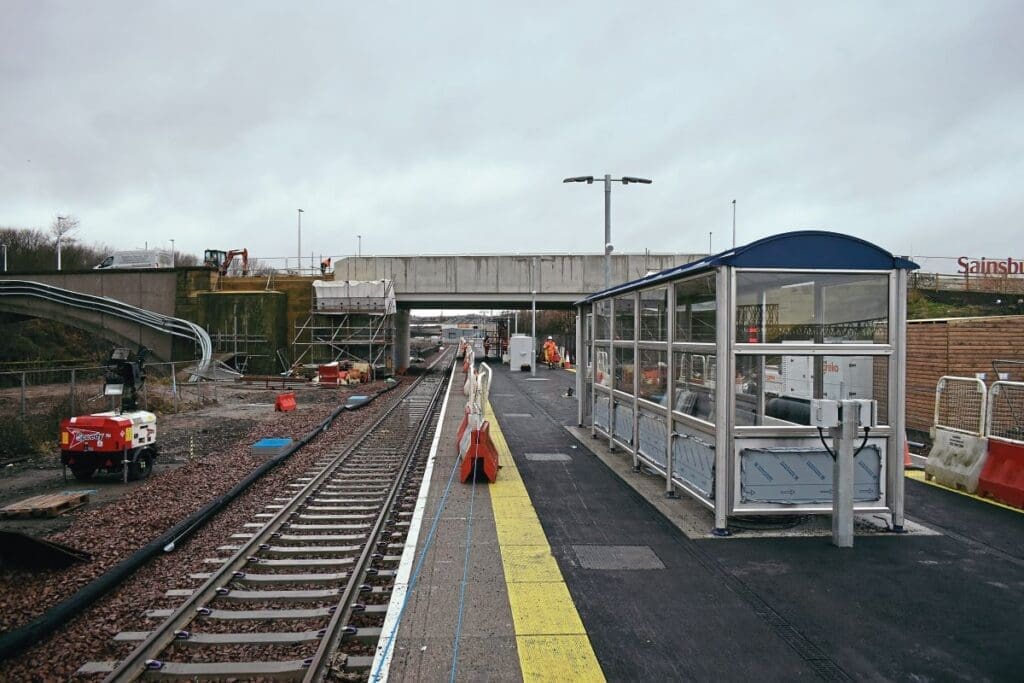

Work begins
On March 4, 2022, Network Rail announced that work on the Levenmouth Rail Link project had got underway. Confirming that the project would cost £116.6m, the infrastructure owner said that the work would include the removal of the former track bed and other route preparation work ahead of the rebuilding of the double-track railway.
NR said at the time that: “By utilising much of the existing double track bed it allows a cost-effective delivery of capacity for passenger, charter and freight service growth and a step-change in new journey opportunities across the wider economic area to places of education, work and leisure.”
There was also confirmation that while the first trains to operate on the route will be diesel-powered, electrification will be undertaken as early as possible.
NR also said that the project will explore the potential opportunities for rail freight and charter trains “to maximise the value of this transformational investment can bring to the Levenmouth area”.
At the same time, Transport Scotland director of rail Bill Reeve said: “The Levenmouth Rail Link demonstrates our ambition not just for improving and investing in Scotland’s Railway, but also our commitment to communities as new rail links bring many additional benefits such as connectivity to the wider economic area to allow new journeys for work, education and leisure.
“Our experience from the highly successful Borders Railway project makes clear the maximum benefits of the railway investment are realised where they are delivered as a package of improved transport measures and underpinned with community initiatives and projects. That is exactly what we are doing at Levenmouth as we work towards our decarbonisation and net zero targets.
“It will give people the opportunity to travel to and from Levenmouth more sustainably, and by including active travel links we can encourage greener end-to-end journeys.”
At the start of this work, Network Rail highlighted that since Mr Matheson approved the scheme in August 2019, the scope had changed to include further investment for electrification and active travel routes as well as the opportunities for freight and charters.
The first rails for the project were laid on March 17, 2022, and followed extensive preparatory work around Thornton Junction, which connects the reopened railway to the Fife Circle. NR explained that: “Existing track sections within the first mile were utilised to deliver the new ballast, sleepers and rails to where they would be needed in the section. The old track was then lifted, and the top layers of ballast removed back to the formation level of the track bed. With the materials all to hand, the track bed could then be quickly re-formed.
“Specialist plant positioned the concrete sleepers in batches of seven covering 72 metres per hour and creating the early chance to put down the first of the new rails. Seven pairs of continuously welded rail sections in 240 metre lengths were positioned on the sleepers before being clipped into place to form the first mile of the new line.”
Planning applications for the two new stations at Cameron Bridge and Leven were submitted by NR on October 7, 2022. The former was at a new site rather than on the former station site, due to the proximity to the Diageo distillery which has a 500m exclusion site for new construction on safety grounds.
Cameron Bridge, which is expected to act as a park-and-ride station for the surrounding communities, will initially feature a car park with 125 spaces but there is contingency for more than 300 spaces in total. There is a footbridge with lifts, as well as waiting shelters and ticket machines at the new site.
Leven features a 210m island platform with level access. There is some car parking, however, it is envisaged most passengers will likely access it by foot due to the integration of a walkway that offers direct connectivity to the High Street.
Despite there not being any overhead line electrification initially, that didn’t stop NR starting piling work on October 18, 2022. The first phase was between Thornton Junction and Haugh Mill Lade. The piles have been installed along the full length of the line, including at stations, so that when authorisation for erection of OLE is given, work can commence immediately.
On January 24, 2023, construction of the new station at Cameron Bridge began. This station is designed to serve both Cameron Bridge and Methilhill as well as acting as a park-and-ride. The platforms are 196m long and were constructed using more than 100 pre-cast units and approximately 200 cubic metres of concrete.
Along the line at Leven, ground was broken at the new station site on February 27, 2023. Featuring two 205m platforms as an island construction there will also be a pebble-styled pavilion area as the station entrance. It is next to the town’s leisure centre.
Work began with the construction of the foundations for the platforms. The platforms themselves were constructed using 98 precast units and around 200 cubic metres of concrete. At the start of this work, Alex Hynes, Scotland’s Railway managing director, said: “This new line will also serve other areas of Fife and allow the community better connectivity which means increased access to employment, education and make it easier for people to visit this beautiful part of the Fife coast. The benefits this brings are countless.”
On August 25, 2023, Scotland’s transport minister Fiona Hyslop installed the final Pandrol clip to mark the completion of tracklaying on the railway. NR confirmed that since work began there had been 80,000 tonnes of spoil removed and around 75,000 tonnes of ballast laid. Additionally, some 29,000 sleepers have been installed while 21.7 miles of rail had been laid in 165m and 215m-long sections. Existing bridges have also been repaired.
Fast-forward to 2024 and driver training has started. When RE visited on December 15, there was still some work to complete on Cameron Bridge and Leven stations, while some footpaths were yet to be finished, but this would not affect the driver training.
ScotRail has undertaken an internal shuffle of trains to be able to begin training. SR operations director David Simpson explained to Rail Express that Class 158s and ‘170s’ will be used on the Levenmouth line when passenger services begin.
Initially one train per hour will operate from Edinburgh Waverley but this will increase to two per hour next year. To release the diesel multiple units for training, Class 156s have been reintroduced on the Glasgow Queen Street-Anniesland route, replacing ‘158s’ that had replaced them. The ‘156s’ have been freed following the electrification of the Barrhead line which switched to ‘380’ operation in December (see Headline News). The increase in timetabled services in 2025 will require a further shuffle of fleets with more DMUs required for the new line. That is still being discussed, however there will not be any new trains added to the fleet.
The project to reopen the railway is one that should benefit the local economy, communities and those seeking to move away from the Scottish capital.
It’s a scheme that shows the power of rail… something the British government could perhaps learn.
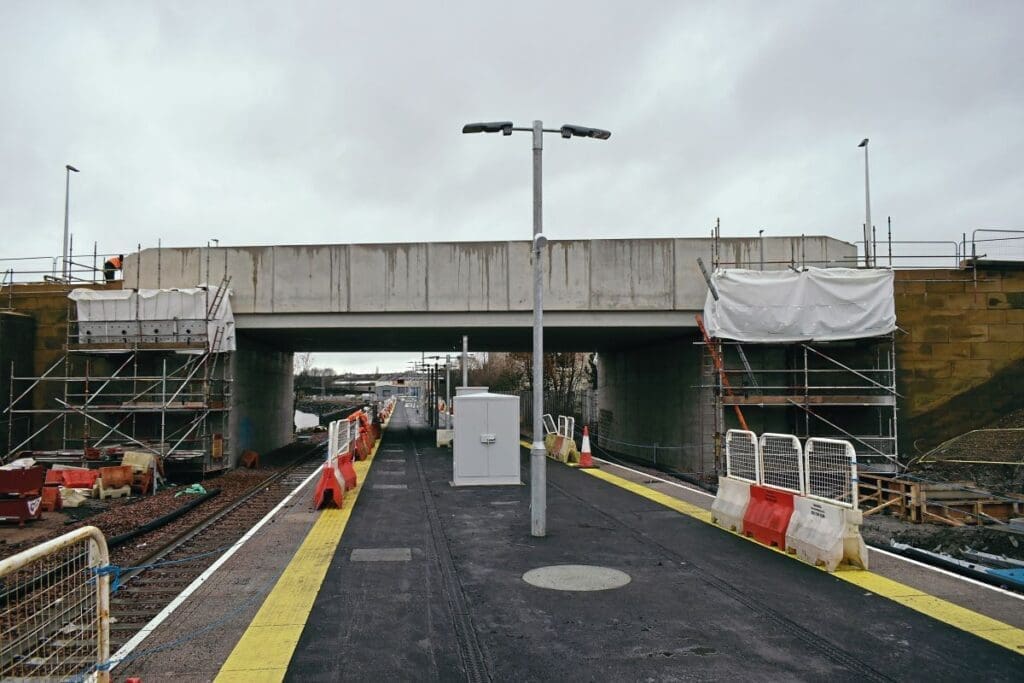
Advert




